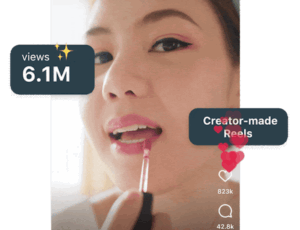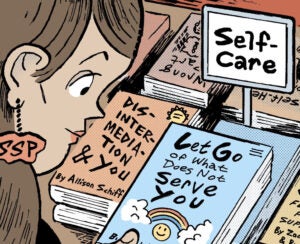 “Data-Driven Thinking” is written by members of the media community and contains fresh ideas on the digital revolution in media.
“Data-Driven Thinking” is written by members of the media community and contains fresh ideas on the digital revolution in media.
Today’s column is written by Ted Dhanik, CEO at engage:BDR.
The news media industry is caught between the traditions of the print world and the experimentations of the digital age.
Their struggle is to make money when information is largely free. To overcome this problem, publishers are debating between growing digital ad revenue, instituting paywalls or both. My contention is that most news organizations need to take an ad-supported approach to succeed in the 21st century.
Some news organizations are erecting paywalls that aim to extract a lot of revenue from a small, price-insensitive audience. This model can’t work for most publications, though, because it cannibalizes ad revenue and requires a high level of prestige.
Instead, the future of the news business belongs to publications that use native ads to elevate the quality and relevance of advertising. By taking a direct role in the editorial direction of native ads, news organizations can preserve their influence and contribution to public dialogue while maintaining a good experience for their readers and viewers.
The Flaws Of The Paywall
When print and distribution were significant costs, a subscription news model made sense. Publishers have always lost money on print and distribution, Greg Satell, former co-CEO of KP Media, points out in Forbes. They were willing to lose because they could profit handsomely on advertising.
Paywalls have become popular because the value of digital advertising has been slow to catch up with the value of traditional print advertising. A paywall model can make money, but the publication has to build business around serving a select audience.
As of May 16, roughly 454 North American newspapers, dailies and weeklies had established digital subscriber plans or paywalls, according to a list maintained by News & Tech. The issue is not that people won’t pay for online content. The problem is that the number of people who will pay for content is relatively static.
AdExchanger Daily
Get our editors’ roundup delivered to your inbox every weekday.
Daily Roundup
“Audience-driven revenue growth does not necessarily signify that more people are paying for news,” the Pew Research Journalism Project argues. “Rather, the data suggest that, in aggregate, more revenue is being squeezed out of a shrinking – or at least flat – base of paying consumers.”
So publications with paywalls increase subscriber revenue by developing new services for existing, price-insensitive subscribers, like corporations and universities. Unless a news source has the resources to develop multiple subscription services, paywall revenue can’t grow or even offset losses in ad revenue because a model based on saving the best information and experiences for paid subscribers will inevitably drive away unpaid users, who have too many free, ad-supported alternatives. In other words, paywalls are only sustainable for a few prestigious news organizations.
The Native Alternative
Just as print publications needed years to figure out what ad formats worked best, digital publications are undergoing that same process – and finally finding some answers. For the majority of news sources that can’t pull off a paywall, there’s evidence that native ad-supported models work. They also encourage ads to contain quality content.
Take the digital newcomers like BuzzFeed and Vice Media, which have both established highly profitable alternatives to the paywall. BuzzFeed forecasts $100 million to $120 million in 2014 revenue, approximately double its 2013 revenue. As of summer 2013, the entertainment and news site was profitable. Just eight years old, BuzzFeed receives more traffic than any other entertainment or news site and it’s America’s most popular mobile site, according to the rankings from Quantcast. The site’s revenue comes from native advertisements, developed jointly by advertisers and BuzzFeed staff.
Although BuzzFeed may be best known for “listicles” about ’90s kids, pictures of animals and quizzes, the site attracted editor Ben Smith from Politico, Mark Schoofs from ProPublica, Pulitzer winner Chris Hamby from The Center for Public Integrity and Emmy-winner Aram Roston, among other top reporters. With more than 100 million unique monthly visits, their journalism has a digital platform for maximum impact.
Vice Media, notorious for its profanity and punk attitude, is looking at 2014 revenues of $500 million with a team of daring journalists who seem to find their way into every war zone and dangerous place in the world. Once again, its ads are native and produced largely by Vice itself, which functions like an ad agency for its clients. At a $2.2 billion valuation, 20-year-old Vice is nearly as valuable as the 163-year-old New York Times. Similar to BuzzFeed, ad-supported profit revenue allows Vice to produce daring content on a scale few, if any, publications can replicate.
Rather than extracting more revenue from a flat subscriber base, news organizations that use native advertising can fund exceptional reporting with ads that can elevate the style and quality standards of the publication. Native clearly works, but like display ads, native formats still require the targeting capabilities and variety of a large ad network to scale.
The Outlook For News
Only a few news outlets can institute paywalls and stay afloat. However, most publications can support high-quality journalism by diversifying into native ads and other emerging formats that work for their style and audience.
What BuzzFeed and Vice Media have in common – and what makes them such great native ad sites – is that they both take an active role in shaping the content. Rather than extracting revenue from their audience, which would shrink, they use their communication skills to help advertisers become more entertaining, likable and viral. While BuzzFeed and Vice may not be perfect for all advertisers, ad networks are beginning to facilitate native advertising across the web.
Early in the digital game, native ads have proven to be highly profitable and audience-friendly – so much so that BuzzFeed has become the leading mobile website and Vice has become a $2.2 billion media company. Becoming the Netflix of news may work for some organizations. Most outlets, however, will maintain the tradition of ad-supported news.
Follow Ted Dhanik (@teddhanik), engage:BDR (@engageBDR) and AdExchanger (@adexchanger) on Twitter.













